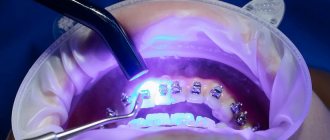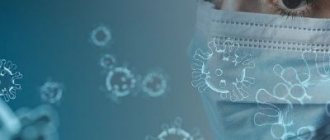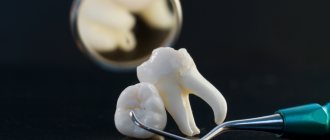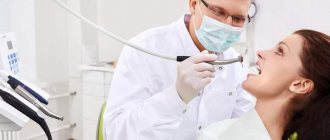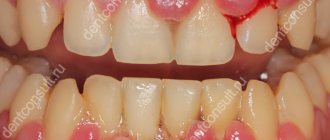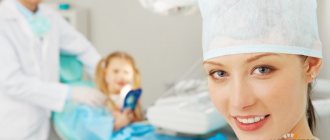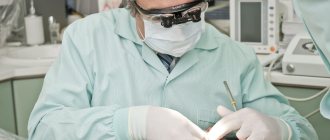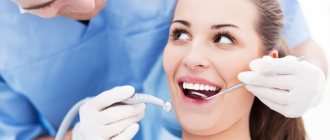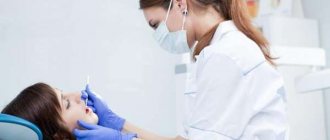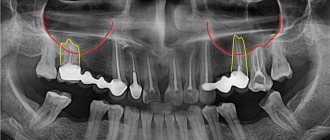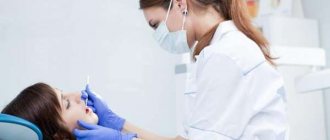Job description of a dental surgeon
________________________
| I APPROVED ______________________ ______________________ ______________________ |
Job Description No. __ Dentist Surgeon
________________________________________________________________________________________________________________________ ________________________________________________________________________________________________________________________
1. GENERAL PROVISIONS
1.1. This job description defines the job duties, rights and responsibilities of a dental surgeon.
1.2. A dentist-surgeon is appointed to a position and dismissed by order of ______________ in accordance with the current legislation of the Russian Federation.
1.3. The dentist-surgeon is directly subordinate to ______________________, and in his absence – to __________________________________.
1.4. During the absence of a dental surgeon (business trip, vacation, illness, etc.), his duties are performed by another employee appointed _____________________.
2. QUALIFICATION REQUIREMENTS
2.1. A person who has __________________________________________________________________________________________________________________________ ___________________________________________________________________________________________________________________________________ is appointed to the position of a dental surgeon.
2.2. A dentist-surgeon in his activities is guided by:
– legislative and regulatory documents in the field of healthcare; – the charter, orders and instructions for the establishment; – ________________________________________________________________; – this job description.
2.3. A dental surgeon should know:
– legislative and other regulatory legal acts on health issues; – the basics of organizing medical and preventive care in hospitals and outpatient clinics, ambulance and emergency medical care, disaster medicine services, sanitary and epidemiological services, drug provision for the population and medical and preventive institutions; – theoretical foundations, principles and methods of medical examination; – organizational and economic foundations of the activities of healthcare institutions and medical workers in the conditions of budgetary insurance medicine; – fundamentals of social hygiene, organization and economics of healthcare, medical ethics and deontology; – legal aspects of medical activities; – general principles and basic methods of clinical, instrumental and laboratory diagnostics of the functional state of organs and systems of the human body; – etiology, pathogenesis, clinical symptoms, clinical features, principles of complex treatment of major diseases; – rules for providing emergency surgical dental care; – basics of examination of temporary disability and medical and social examination; – basics of health education; – modern methods of prevention, diagnosis, treatment and rehabilitation of surgical diseases of the maxillofacial area; – content and sections of surgical dentistry as an independent clinical discipline; – tasks, organization, structure, staffing and equipment of the surgical dental service; – rules for preparing medical documentation; – principles of planning and reporting of surgical dental services; – methods and procedures for monitoring the activities of the surgical dental service; – basics of labor legislation; – Labor regulations; – rules on labor protection, environmental protection, industrial sanitation and fire safety.
3. JOB RESPONSIBILITIES
Dentist surgeon:
3.1. Provides qualified medical care in the field of surgical diseases of the maxillofacial area, using modern methods of prevention, diagnosis, treatment and rehabilitation, approved for use in medical practice.
3.2. Determines the tactics of patient management in accordance with established rules and standards.
3.3. Develops a plan for examining the patient, clarifies the scope and rational methods of examining the patient in order to obtain complete and reliable diagnostic information in the shortest possible time.
3.4. Based on clinical observations and examination, anamnesis, data from clinical, laboratory and instrumental studies, establishes (or confirms) a diagnosis.
3.5. In accordance with established rules and standards, prescribes and monitors the necessary treatment, organizes or independently carries out the necessary diagnostic, therapeutic, rehabilitation and preventive procedures and activities.
3.6. Makes changes to the treatment plan depending on the patient's condition and determines the need for additional examination methods.
3.7. Provides advisory assistance to doctors of other departments of the medical institution in their specialty.
3.8. Provides emergency surgical dental care in full on an outpatient basis and in a hospital setting.
3.9. Supervises the work of the nursing and junior medical personnel subordinate to him (if any), assists them in the performance of their official duties.
3.10. Monitors the correctness of diagnostic procedures, operation of instruments, apparatus and equipment, rational use of reagents, compliance with safety and labor protection rules by nursing and junior medical personnel.
3.11. Participates in conducting training courses for medical personnel.
3.12. Plans his work and analyzes his performance indicators.
3.13. Ensures timely and high-quality execution of medical and other documentation in accordance with established rules.
3.14. Conducts sanitary and educational work on the prevention of surgical dental diseases of the maxillofacial area.
3.15. Complies with the rules and principles of medical ethics and deontology.
3.16. Participates in the examination of temporary disability and prepares the necessary documents for medical and social examination.
3.17. Conducts an analysis of his own work and the work of subordinate specialists with secondary medical education.
3.18. Monitors compliance by nursing and junior medical personnel with safety regulations and sanitary-epidemiological regime.
3.19. Qualifiedly and timely carries out orders, instructions and instructions from the management of the institution, as well as regulatory legal acts related to his professional activities.
3.20. Promptly takes measures, including timely informing management, to eliminate violations of safety regulations, fire safety and sanitary rules that pose a threat to the activities of the healthcare institution, its employees, patients and visitors.
3.21. Systematically improves his skills.
4. RIGHTS
A dentist surgeon has the right:
4.1. Independently establish a diagnosis in the specialty based on clinical observations and examination, medical history, data from clinical, laboratory and instrumental studies.
4.2. Determine patient management tactics in accordance with established rules and standards.
4.3. Prescribe instrumental, functional and laboratory diagnostic methods necessary for a comprehensive examination of the patient.
4.4. Carry out diagnostic, therapeutic, rehabilitation and preventive procedures using approved diagnostic and treatment methods.
4.5. Involve, when necessary, doctors of other specialties for consultations, examination and treatment of patients.
4.6. Make proposals to the management of the institution on improving the diagnostic and treatment process, including improving the work of paraclinical and administrative services, issues of organization and conditions of their work.
4.7. Monitor the work of subordinate employees (if any), give them orders within the framework of their official duties and demand their strict execution, make proposals to the management of the institution for their encouragement or imposition of penalties.
4.8. Request, receive and use information materials and regulatory documents necessary to perform their official duties.
4.9. Pass certification in the prescribed manner with the right to receive the appropriate qualification category.
4.10. Take part in meetings, conferences, sections where issues related to professional competence are discussed.
4.11. Improve your qualifications through advanced courses ___________________.
5. RESPONSIBILITY
The dentist-surgeon is responsible for:
5.1. For improper performance or failure to fulfill one’s job duties as provided for in this job description - in accordance with current labor legislation.
5.2. For violations committed in the course of carrying out its activities - in accordance with current civil, administrative and criminal legislation.
5.3. For causing material damage - in accordance with current legislation.
5.4. For violation of labor regulations, fire safety and safety regulations established in the organization.
The job description was developed in accordance with the order of ______________________.
AGREED
| Head of HR Department | _______________________ | _______________________ |
_________________
I have read these instructions.
I received one copy in my hands and undertake to keep it at my workplace.
| Dentist surgeon | _______________________ | _______________________ |
_________________
Cosmetic interventions
The need for cosmetic surgery in the oral cavity arises from functional and anatomical defects of soft and bone tissues resulting from:
- congenital malformations of the dental system;
- injuries;
- age-related changes;
- inflammatory diseases;
- surgical intervention.
The main cosmetic operations include: gingivoplasty, vestibuloplasty, frenuloplasty, elimination of gingival recession.
Gingivoplasty
Gingivoplasty is an operation performed on the gums to improve the aesthetics, condition and functionality of periodontal tissue.
During the process of gingivoplasty, the dental surgeon adds missing or removes excess gum tissue. Indications for gingivoplasty are:
- multi-level arrangement of the gum edge;
- covering a significant part of the tooth crown (“shark smile”);
- receding (recession) of the gums, exposing the root part of the tooth;
- presence of periodontal pockets;
- the need to form the gum edge during prosthetics or implantation;
- various aesthetic pathologies of the gums.
When performing gingivoplasty, curettage is often performed, tissue is transplanted onto gums taken from other places, and sometimes bone grafting is performed.
Vestibuloplasty
The vestibule of the mouth is the area located between the lip or cheeks and the teeth. A shallow vestibule (less than 5 mm deep), observed in every fifth person, can cause a number of pathologies - excessive tension and atrophy of the gums, exposure of the necks of teeth, malocclusion, jaw deformation, gingivitis, periodontitis, periodontitis.
The defect is corrected using vestibuloplasty. This is not only a cosmetic, but also a medical operation. Its essence is to deepen and expand the vestibule. The operation is performed under local anesthesia.
Vestibuloplasty technique:
- an incision is made between the gum and the movable part of the vestibule to the entire depth of the mucosa without affecting the periosteum;
- the mucous membrane with the underlying tendons and muscles is detached and moved inward along the periosteum;
- a mucous flap is sutured to the newly formed vestibule.
Frenuloplasty
The fold connecting the tongue to the floor of the mouth is called the inferior frenulum or frenulum . Its length is normally 2.7–3 cm, and it is attached approximately to the middle of the tongue.
A shortened frenulum is a pathological (usually congenital) condition leading to dysfunction of the dentofacial apparatus. It causes excessive tension in the gingival tissue, deterioration of blood circulation in the periodontium, exposure of the necks of the teeth, and leads to mechanical injuries.
Infants with a shortened frenulum have problems with sucking milk, older children and adults have problems with diction (lisp).
Due to the strong tension of the frenulum, large gaps appear between the teeth, the bite is disturbed, and an aesthetically unattractive “gummy smile” can form (exposure of a significant part of the gums when smiling).
The pathology is eliminated by frenuloplasty - an operation the essence of which is to cut and/or change the attachment site of the frenulum.
The most appropriate frenuloplasty technique in a particular case is chosen by the dental surgeon, based on the clinical situation.
Elimination of gum recession
Gum recession is a displacement of its edge towards the apex of the root, as a result of which the neck of the tooth is exposed. In young people, this pathology is observed relatively rarely, in about 1 in 10. With age, its frequency increases, reaching 80-95% in older people.
The causes of gum recession are inflammatory processes in the periodontium, malocclusion, individual structural features of teeth, gums and jaws, injuries, and age-related changes in the dentofacial apparatus.
The consequence is exposure of the tooth roots, hypercementation, development of caries, swelling, bleeding, and loose teeth.
Gum recession is most often treated surgically, although conservative treatment methods have also been developed and used.
Surgical intervention consists of covering exposed dental roots with tissue flaps (DSDT, SST, SDT grafts), special membranes, and displacement of the mucous membrane from the gums. A combination of these methods is possible.
Contact with related specialties
A large number of therapeutic activities that a dental surgeon is involved in involves his close cooperation with doctors of other areas and specialties - dental therapists, orthodontists, orthopedists, oncologists.
A dental surgeon must be well versed not only in orthodontics, orthopedics, pediatric dentistry, but also in areas that are not directly related to dentistry, but are necessary for successful surgical intervention or rehabilitation after it.
This is pharmacology (medicines for local and general anesthesia, antiseptic and antibiotic drugs), the procedure and scheme for routing patients when diagnosing other diseases, in particular oncological ones.
It is necessary to know the regulatory documents and laws that regulate the work of not only a dental surgeon, but also doctors in other fields.
Reviews
Most often, people encounter a dental surgeon when removing teeth. Implantation, patchwork and cosmetic surgeries, restoration of jaw proportions are rarer cases.
If you have undergone these operations, tell us about your impressions of them and the results of the dental surgeon’s work specifically in your case. By leaving your comment at the bottom of the page, you will help someone make the right choice.
If you find an error, please select a piece of text and press Ctrl+Enter.
